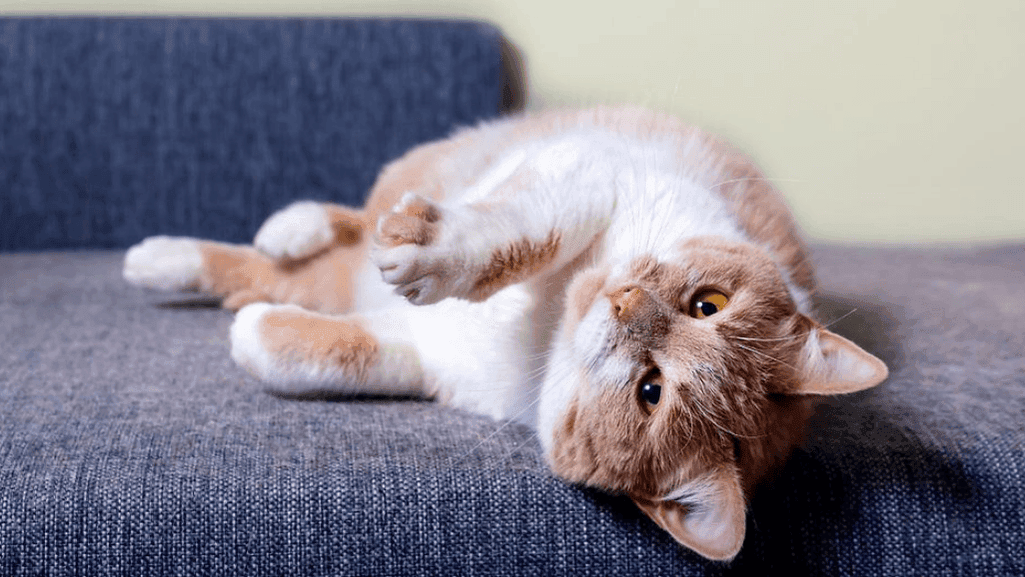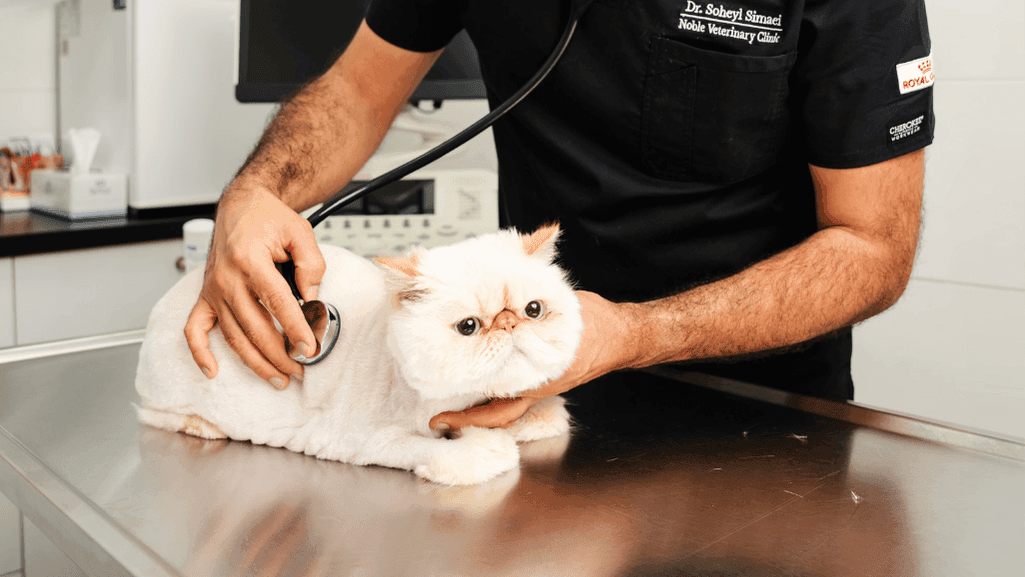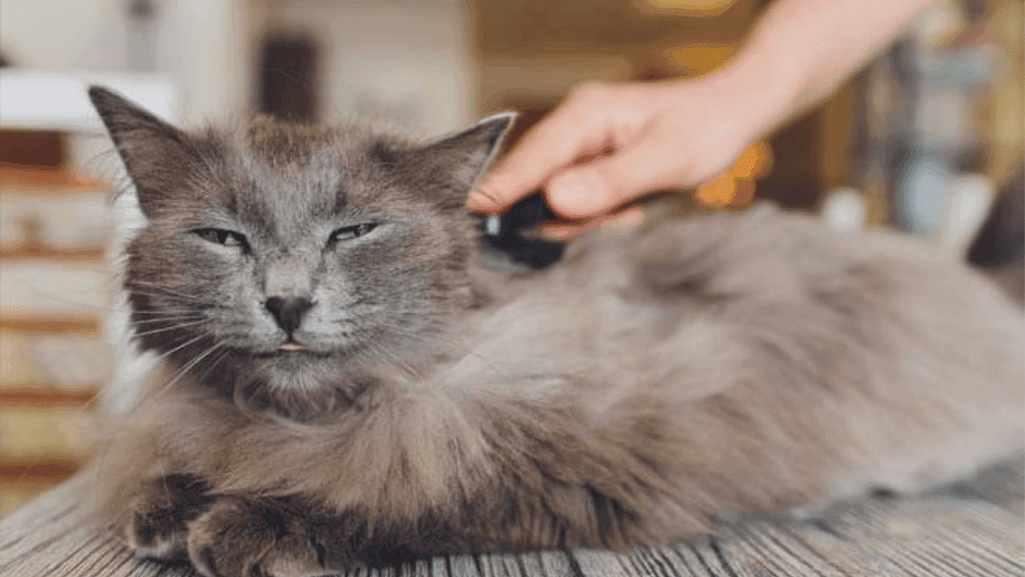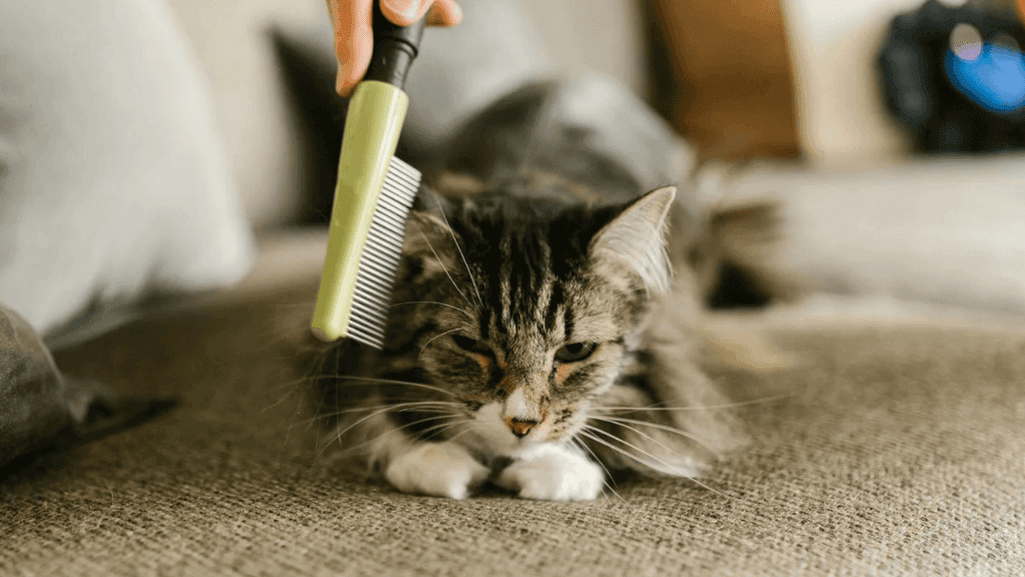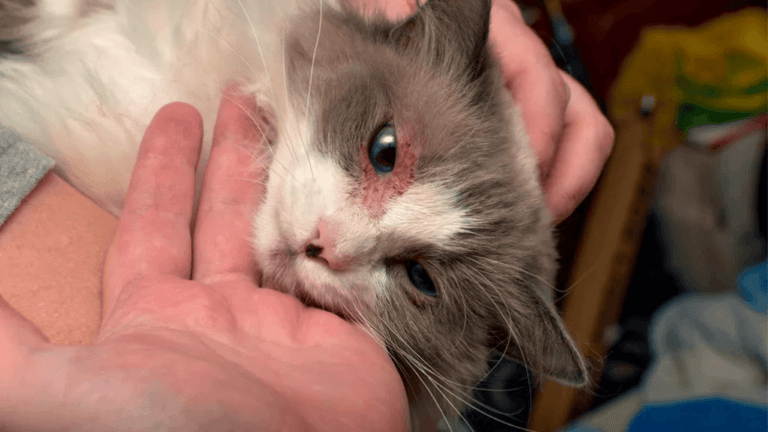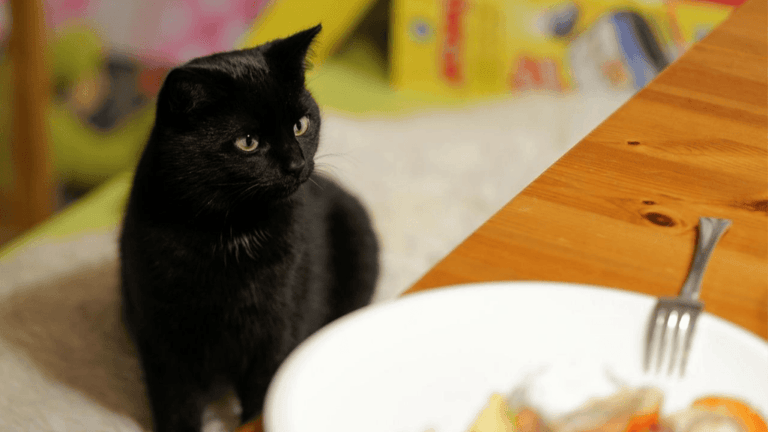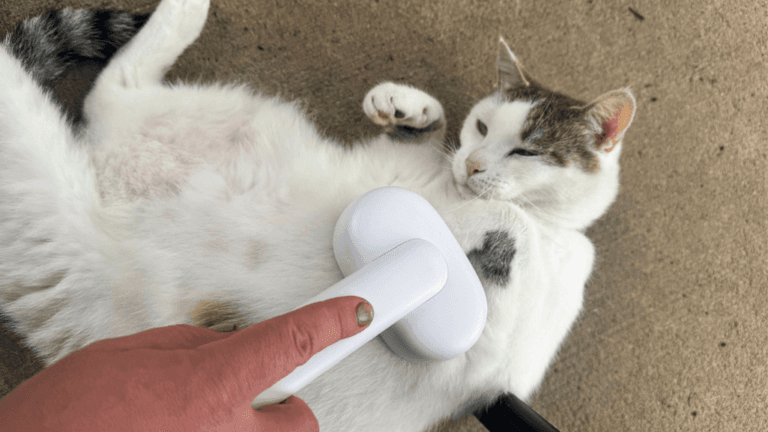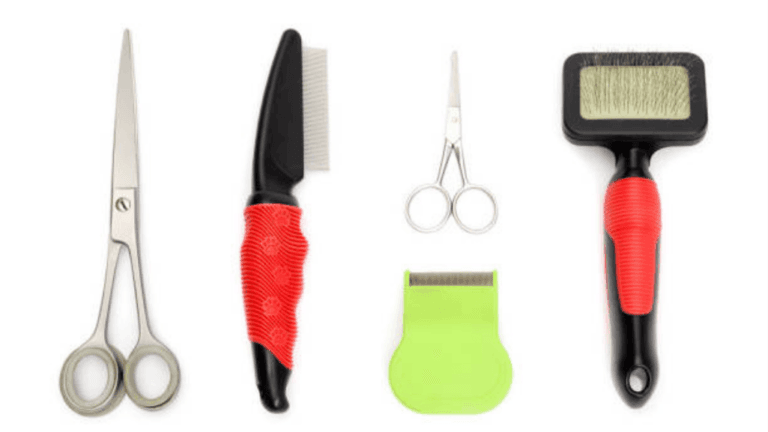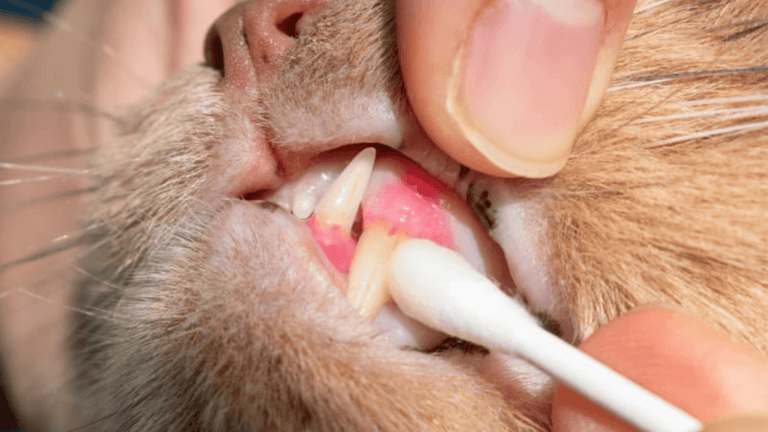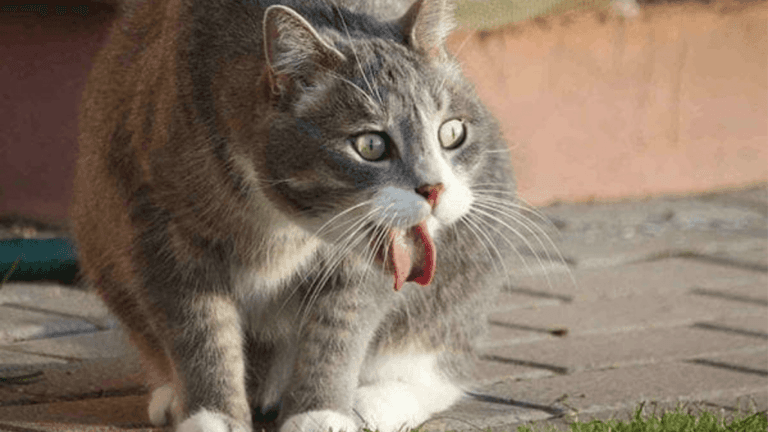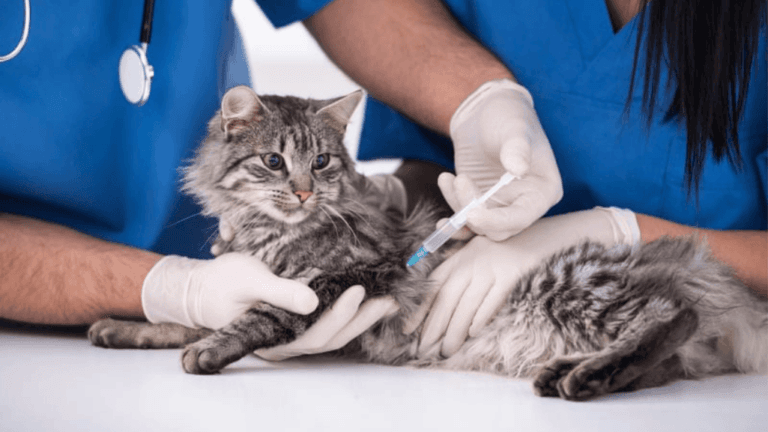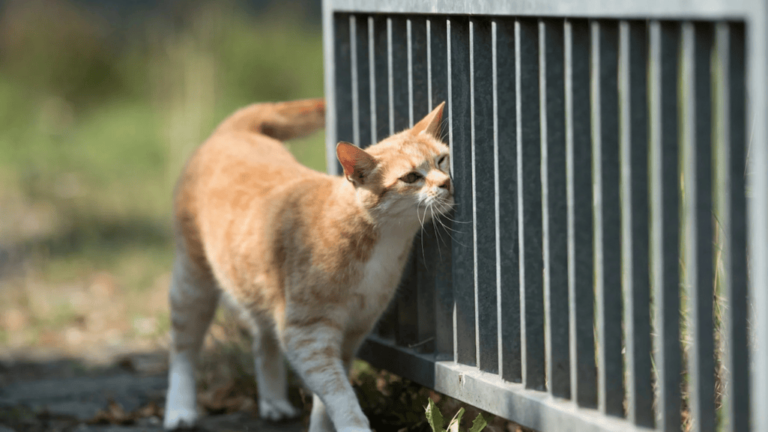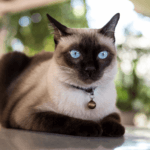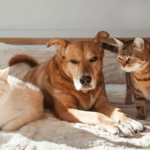If you love cats, you might wonder about the difference in shedding between long-haired and short-haired cats. All cats shed, but some breeds shed more than others. We’ll look into why this happens and what affects cat shedding.
Long-haired cats like Maine Coons, Persians, and Ragdolls shed more. Their long, thick coats need regular grooming to avoid mats and fur buildup. Short-haired cats, however, shed less and need less grooming.
But, there’s more to shedding than just coat length. Seasonal changes, where they live, diet, stress, age, and health also play a role. We’ll dive into these factors to help you understand your cat’s shedding better.
Key Takeaways:
- Long-haired cats generally shed more than short-haired cats due to their thicker, longer coats.
- Shedding can be influenced by factors such as seasonal changes, indoor vs. outdoor living, diet, stress, age, and health.
- Regular grooming and brushing are essential for managing cat shedding, particularly for long-haired breeds.
- Understanding your cat’s shedding patterns can help you distinguish between normal shedding and potential health issues.
- Maintaining a balanced diet, reducing stress, and providing proper care can help minimize excessive shedding in cats.
Understanding Cat Fur and Hair
https://www.youtube.com/watch?v=_vgqhxq1K5c
When we talk about cat coats, “fur” and “hair” are often mixed up. But, there’s a small difference. Fur is the soft, thick layer on a cat’s body. Hair refers to the individual strands in the fur. A cat’s coat, made of fur or hair, protects, insulates, and keeps them dry.
The Difference Between Fur and Hair
Cat fur is made of three kinds of hair: guard hairs, awn hairs, and down hairs. Guard hairs are long and tough, protecting the cat from the weather. Awn hairs are shorter and softer, adding more insulation. Down hairs, or undercoat, are the shortest and finest, making the fur soft and fluffy.
Layers of a Cat’s Coat
How many coat layers a cat has can vary. Some breeds have more or fewer layers, with different hair lengths and textures. For example, the Siberian cat has a thick coat for cold weather. The Sphynx, though hairless, has a fine undercoat.
These coat differences come from genetics. The fibroblast growth factor 5 (FGF5) gene controls hair length.
| Genotype | Coat Type | Example Breeds |
|---|---|---|
| L/L | Short hair | British Shorthair, Siamese, Bengal, Russian Blue |
| L/l or l/l | Medium to long hair | Persian, Maine Coon, Ragdoll |
The Function of Whiskers
Cats’ whiskers, or vibrissae, act as touch sensors. They are thick and stiff, embedded deep in the skin. Whiskers help cats sense their surroundings. They are found on the cheeks, chin, above the eyes, and on the back of the front legs.
Unlike regular fur, whiskers should never be cut. They are crucial for a cat’s spatial awareness and navigation.
“Whiskers are a vital part of a cat’s sensory system, helping them to navigate their environment and avoid potential hazards.”
– Dr. Jane Brunt, Executive Director of the CATalyst Council
In summary, knowing the difference between cat fur and hair, the layers of their coat, and the role of whiskers is key. It helps us care for our cats better. By understanding their unique coats, we can keep them healthy and happy.
Why Cats Shed
Shedding is a natural process for cats. It helps remove dead hair and release oils from their skin. Cats groom themselves but still need help from humans to avoid hairballs. Hairballs can cause serious problems if not taken care of.
Removing Dead Hair and Releasing Natural Oils
Cats shed to get rid of dead hair. If they don’t groom, this hair falls out naturally. Not removing dead hair can irritate their skin and make them uncomfortable. Shedding also spreads natural oils, keeping their coat healthy and shiny.
Seasonal Shedding Cycles
Cats usually shed heavily twice a year, with the seasons changing. They shed in spring and fall. In spring, they lose their thick winter coat for warmer weather. In fall, they prepare for winter by growing a new, thick coat.
The amount of shedding varies by breed, age, and health. These cat shedding seasons are key times for grooming.
Impact of Indoor vs. Outdoor Living on Shedding
Where a cat lives affects its shedding. Outdoor cats are exposed to natural light and temperature changes. This helps regulate their shedding cycles, with more shedding in spring and fall.
Indoor cats, on the other hand, have artificial lighting and controlled temperatures. This can make their shedding cycles irregular. They may shed more throughout the year, especially with air conditioning in summer and heating in winter.
| Shedding Frequency | Indoor Cats | Outdoor Cats |
|---|---|---|
| Seasonal | Less pronounced | Twice a year (spring and fall) |
| Year-round | Relatively constant | Less frequent |
Cats are fastidious groomers, spending up to 50% of their waking hours cleaning and maintaining their coats.
Knowing why cats shed and how it’s influenced by seasons and living conditions helps owners care for them better. Regular grooming and a healthy diet can reduce excessive shedding. This keeps their coats in top condition.
Factors Influencing Shedding
Many things can affect how much your cat sheds. Knowing these can help you manage their shedding and keep their coat healthy. Let’s look at some key factors that impact cat shedding.
Breed: Long-Haired vs. Short-Haired Cats
The length of your cat’s fur greatly affects shedding. Long-haired cats, like Maine Coons and Persians, shed more than short-haired ones. They need more grooming to avoid mats and tangles. Short-haired cats, such as Siamese and British Shorthairs, shed less.
Diet Quality and Nutrition
A good diet is key for your cat’s skin and fur health. Bad food can cause too much shedding and a dull coat. Foods rich in Omega-3 and Omega-6 fatty acids, and Vitamins E, A, and B-complex, are good for their coat. A high-quality diet can reduce shedding and make their coat shiny.
Stress and Anxiety
Cats get stressed by changes in their environment and routine. Stress can make them groom more, leading to more shedding. Stressors include moving, new pets, or changes in routine. Keeping your cat’s environment calm and providing mental and physical stimulation can help reduce shedding.
Age and Grooming Habits
As cats get older, their grooming habits change, affecting shedding. Kittens and senior cats shed more. Older cats may groom less due to mobility or dental issues, leading to matted fur. Regular grooming helps remove loose hair and keeps their coat healthy at any age.
| Age Group | Grooming Frequency |
|---|---|
| Kittens (up to 6 months) | Daily |
| Adult Cats (6 months to 10 years) | 1-2 times per week |
| Senior Cats (10+ years) | 2-3 times per week |
Pregnancy and Lactation
Hormonal changes during pregnancy and nursing make female cats shed more. This is normal as the body focuses on the kittens. Pregnant and nursing cats need extra grooming and a rich diet to keep their coat healthy and reduce shedding.
While shedding is natural for cats, too much can mean health issues. If your cat’s shedding changes suddenly or they show skin problems, see your vet.
Distinguishing Normal Shedding from Medical Issues
Shedding is normal for cats, but excessive shedding might mean a health problem. It’s key for cat owners to spot abnormal shedding signs and know when to see a vet.
Signs of Excessive Shedding or Skin Irritation
Excessive shedding in cats can show up in different ways, such as:
- Visible bald patches or thinning hair
- Dull, dry, or brittle coat
- Flaky, red, or irritated skin
- Increased scratching or overgrooming
- Presence of mites, fleas, or lice
If you see any of these signs, watch your cat closely. It’s important to talk to a vet about cat shedding issues.
Consulting with a Veterinarian
When shedding or skin irritation doesn’t go away, it’s time to see a vet. Tell them about your cat’s shedding, diet, and any changes in their life or behavior. The vet will check your cat’s coat, skin, and overall health.
A timely vet visit can find and fix the reasons for too much shedding. This ensures your cat gets the right care.
Diagnostic Tests for Underlying Health Problems
After the vet’s check, they might suggest tests to find the cause of shedding. These tests could be:
- Skin scrapings to check for parasites or fungal infections
- Hair pluck tests to examine hair follicles and shafts
- Blood work to assess organ function and hormonal imbalances
- Urinalysis to detect any metabolic or urinary tract issues
- Allergy testing to identify potential allergens
These tests help the vet create a plan to fix the health issues causing your cat’s shedding.
| Diagnostic Test | Purpose |
|---|---|
| Skin scraping | Identify parasites or fungal infections |
| Hair pluck test | Examine hair follicles and shafts |
| Blood work | Assess organ function and hormonal imbalances |
| Urinalysis | Detect metabolic or urinary tract issues |
| Allergy testing | Identify potential allergens |
By quickly dealing with excessive shedding and getting vet advice, cat owners can keep their pets’ skin and coat healthy. This ensures a happy and healthy life for them.
Potential Health Issues Affecting Shedding
Shedding is normal for cats, but too much hair loss might mean a health issue. Several things, like parasites, allergies, skin infections, diseases, and behavioral problems, can make cats shed more.
Parasites: Mites and Fleas
Parasites like mites and fleas can make cats very uncomfortable. They cause cats to scratch and chew a lot. This can lead to hair loss, especially where they groom themselves.
Allergies: Food, Environmental, and Insect Bites
Allergies are another reason for cats to shed more. Food allergies can harm a cat’s skin and coat, causing hair loss. Environmental allergens and bug bites can also irritate a cat’s skin and make them shed more.
Skin Infections: Bacterial and Fungal
Bacterial and fungal infections can really affect a cat’s coat. These infections can cause a lot of hair loss. They also lead to skin problems like lesions, redness, and itchiness.
Diseases: Kidney, Liver, Thyroid, Adrenal Gland, and Cancer
Many diseases can make cats shed more. Kidney, liver, thyroid, and adrenal gland problems, as well as some cancers, can cause hair loss. For example, untreated thyroid issues can lead to weight loss and constant shedding, no matter the weather.
Behavioral Disorders and Self-Induced Fur Loss
Stress and anxiety can make cats groom too much, leading to fur loss. Changes in their environment or new pets can stress them out. Finding and fixing the stress causes is key to solving these problems.
If your cat is shedding too much, see a vet. They can find out why and help fix it. By tackling the real issue, whether it’s parasites, allergies, infections, diseases, or stress, you can help your cat’s coat stay healthy and reduce shedding.
Managing Shedding at Home
Managing your cat’s shedding can be done at home. You can take steps to address diet, parasite protection, hydration, stress, and grooming. This approach helps reduce excessive shedding and keeps your cat’s coat healthy.
Providing a Balanced, Veterinary-Recommended Diet
Feeding your cat a balanced diet is key. Choose high-quality cat food with omega-3 fatty acids, biotin, and zinc. These nutrients support skin and coat health, reducing shedding. Supplements like fish oil and probiotics can also help.
Year-Round Parasite Protection
Parasites like fleas and mites can cause skin issues and excessive shedding. Use vet-recommended parasite preventatives all year, even for indoor cats. Regular use helps control parasites and reduces shedding.
Ensuring Proper Hydration
Drinking enough water is crucial for a healthy coat and less shedding. Make sure your cat has access to fresh water everywhere. Consider a cat water fountain to encourage more drinking.
Reducing Stress in the Cat’s Environment
Stress can lead to more shedding. Create a safe space with hiding spots and perches. Engage your cat with play and puzzles to reduce stress and shedding.
Regular Grooming with Brushes or Combs
Grooming is vital for shedding management, especially for long-haired cats. Brushing daily helps remove loose fur and prevents hairballs. Use treats to make grooming a positive experience.
| Grooming Tool | Purpose | Ideal For |
|---|---|---|
| Slicker Brush | Removes loose fur and tangles | Long-haired cats |
| Bristle Brush | Distributes natural oils and removes dirt | Short-haired cats |
| Deshedding Tool | Removes undercoat and reduces shedding | Heavy shedders |
| Grooming Glove | Gentle grooming and massaging | Cats that dislike brushes |
Professional Grooming for Long-Haired or Senior Cats
Professional grooming is great for long-haired or senior cats. It includes fur trimming and de-matting, reducing shedding and improving comfort. Regular grooming is especially helpful for older cats with mobility issues.
Pros and Cons of Short-Haired Cats
Thinking about getting a cat? You might be looking at the short haired cat pros and cons. Your choice depends on what you like and your lifestyle. Knowing what short-haired cats are like can help you decide.
Less Frequent Brushing Required
Short-haired cats are easier to groom. They need brushing only once or twice a week. Their fur is short, so it doesn’t get tangled easily.
Experts say short-haired cats shed a lot. But their fur is shorter, so it’s less noticeable.
Adaptability to Different Litter Box Types
Short-haired cats are flexible with litter boxes. They don’t get picky like long-haired cats. This means you can pick from many litter boxes, finding the right one for your cat and home.
Less Fluffy Coat
Short-haired cats have a soft coat, but it’s not as fluffy as long-haired ones. They are great snugglers, offering warmth without a thick coat. Their fur is also sleeker, appealing to those who like a streamlined look.
| Pros | Cons |
|---|---|
| Less frequent brushing required | May still shed considerably |
| Adaptable to various litter box types | Coat not as fluffy or plush |
| Sleeker, more streamlined appearance | May not provide as much insulation in colder climates |
In summary, short-haired cats have their perks. They are easy to groom, adaptable, and have a soft coat. They are great pets for many homes.
Pros and Cons of Long-Haired Cats
Long-haired cats are loved for their beautiful, fluffy coats. They look elegant and regal. But, it’s important to think about the good and bad points of their fur before getting one.
One big plus is their soft fur, perfect for cuddling. Many find their fur soothing. Also, some breeds like Persians and Maine Coons are calm and friendly, great for those wanting a calm pet.
But, grooming long-haired cats is a big job. They need daily brushing to avoid tangles. Missing a day or two is okay, but regular grooming keeps their coat healthy and looking good. Not grooming enough can cause pain, skin problems, and infections.
Long-haired cats might also have special litter box needs. They often prefer open boxes to keep their fur clean. They can be picky and might not use a dirty box, leading to accidents.
People with allergies should think twice about long-haired cats. Their fur makes them groom more, which means more saliva and dander. This can make allergies worse, making long-haired cats not the best choice for those with allergies.
| Pros | Cons |
|---|---|
| Soft, plush coat perfect for snuggling | Requires daily grooming to prevent matting |
| Some breeds known for laid-back personalities | May be picky about litter box preferences |
| Stunning, elegant appearance | Increased dander production due to frequent grooming |
| Well-suited for colder climates | May not be ideal for individuals with allergies |
Choosing a long-haired cat is a big decision. Their beautiful coats and gentle nature are attractive. But, owners must be ready for regular grooming and meet their needs for a happy, healthy pet.
Do Long Haired Cats Shed More?
Many people wonder if long-haired cats shed more than short-haired ones. The truth is not simple. Long-haired cats might seem to shed more because of their fur length and volume. But, both long and short-haired cats shed differently based on several factors.
Comparing Shedding Between Long-Haired and Short-Haired Cats
In the United States, over 75 million cats are pets, with about 10% being long-haired. Despite their popularity, long-haired cats don’t always shed more than short-haired ones. The amount of shedding depends on breed, genetics, grooming, and hair type.
Some short-haired breeds, like the American and British shorthairs, shed as much as long-haired Persians. This shows that coat length doesn’t always mean more shedding.
Breed-Specific Shedding Patterns
Each cat breed sheds differently, regardless of coat length. Breeds like Maine Coons, Ragdolls, and Persians shed a lot. This is because of their thick coats and seasonal shedding.
Long-haired cats shed twice a year. Once in fall for winter, and again in spring for summer. During these times, they need more grooming to prevent matting.
| Coat Type | Grooming Frequency |
|---|---|
| Elegant tail plumes | Once a week or less |
| Semi-long fur | Twice a week |
| Ultra-long fur | Daily |
| Fine downy or cottony undercoat | Two to three times a week |
Long-haired cats need more grooming, especially during shedding seasons. But, shedding is natural and keeps their skin and coats healthy. Regular grooming helps manage shedding and keeps both long and short-haired cats happy and healthy.
Minimizing Shedding and Cleaning Up
Shedding is normal for cats, but you can cut down on the fur they leave around. Focus on their diet, grooming, and your home to reduce shedding. This makes cleaning easier.
Examining Your Cat’s Diet
Your cat’s diet affects their skin and coat health, which impacts shedding. Choose cat food rich in proteins, omega-3, and omega-6 fatty acids. These nutrients soften their coat and skin, reducing shedding. Also, make sure your cat drinks plenty of fresh water to keep their coat healthy.
Daily Grooming and Brushing
Brushing your cat daily is the best way to cut down on shedding. It removes loose fur before it falls on your furniture or clothes. Brush your cat every day, focusing on areas that tend to mat or tangle. Long-haired cats need more brushing to avoid mats.
Try different brushing techniques to see what works best for your cat.
Distracting Cats from Excessive Grooming
Cats may groom too much due to stress or anxiety, leading to more shedding. Give them interactive toys and activities to distract them. Puzzle feeders, scratching posts, and catnip toys can keep them busy and reduce stress-related shedding.
Using Hairball Control Shampoos
For cats with a lot of shedding, use hairball control shampoos during baths. These shampoos help remove loose fur and prevent hairballs. But, don’t bathe your cat too often, as it can dry out their skin and increase shedding.
Protecting Furniture with Covers
Use washable covers or throws to protect your furniture from cat hair. These can be washed when they get fur on them, saving you time. You can also set aside areas for your cat to lounge without getting hair on your favorite spots.
Regular Dusting and Vacuuming
Cleaning regularly is essential for managing cat hair. Dust and vacuum daily, especially where your cat spends most of their time. Use a vacuum with a HEPA filter to catch fine cat hair and dander, improving air quality and reducing allergens.
| Cleaning Task | Frequency | Benefit |
|---|---|---|
| Dusting | Daily | Removes settled cat hair and dander from surfaces |
| Vacuuming | Daily | Captures loose cat hair from floors and upholstery |
| Washing bedding | Weekly | Eliminates accumulated hair and odors from cat beds |
| Laundering covers | As needed | Removes hair from furniture covers and throws |
Investing in Lint Brushes for Clothing and Furniture
Lint brushes are a must-have for cat owners. They make it easy to remove cat hair from clothes, furniture, and car seats. Keep lint brushes around your home for quick clean-ups, and avoid leaving the house with cat hair.
“Regular grooming, a healthy diet, and a stress-free environment are the keys to minimizing cat shedding and keeping your home clean.” – Dr. Jane Smith, Veterinarian
By following these tips and staying consistent, you can reduce cat hair in your home. Enjoy a cleaner, more comfortable space with your feline friend.
Conclusion
Long-haired and short-haired cats both shed, but long-haired ones shed more. This is because they have more hair. However, how much they shed can change based on their diet, health, and grooming.
Regular grooming is key. Brushing and combing remove loose hair and keep their coat healthy. This is especially important for long-haired breeds like Persians and Maine Coons.
Keeping a grooming routine helps manage shedding. It also keeps your cat’s coat healthy. This is crucial for both long-haired and short-haired cats.
Feeding your cat a balanced diet and reducing stress can also help. If your cat sheds too much, it’s important to see a vet. They can check for any health problems that might be causing the extra shedding.
By grooming your cat regularly and taking steps to reduce cat hair, you can manage shedding. Regular vacuuming and using furniture covers help a lot. With a bit of effort, you can keep your home relatively fur-free, no matter your cat’s coat type.
Remember, a happy, healthy cat is worth a little extra cleaning. Enjoying their company is what matters most, even if it means a bit more work for you!


